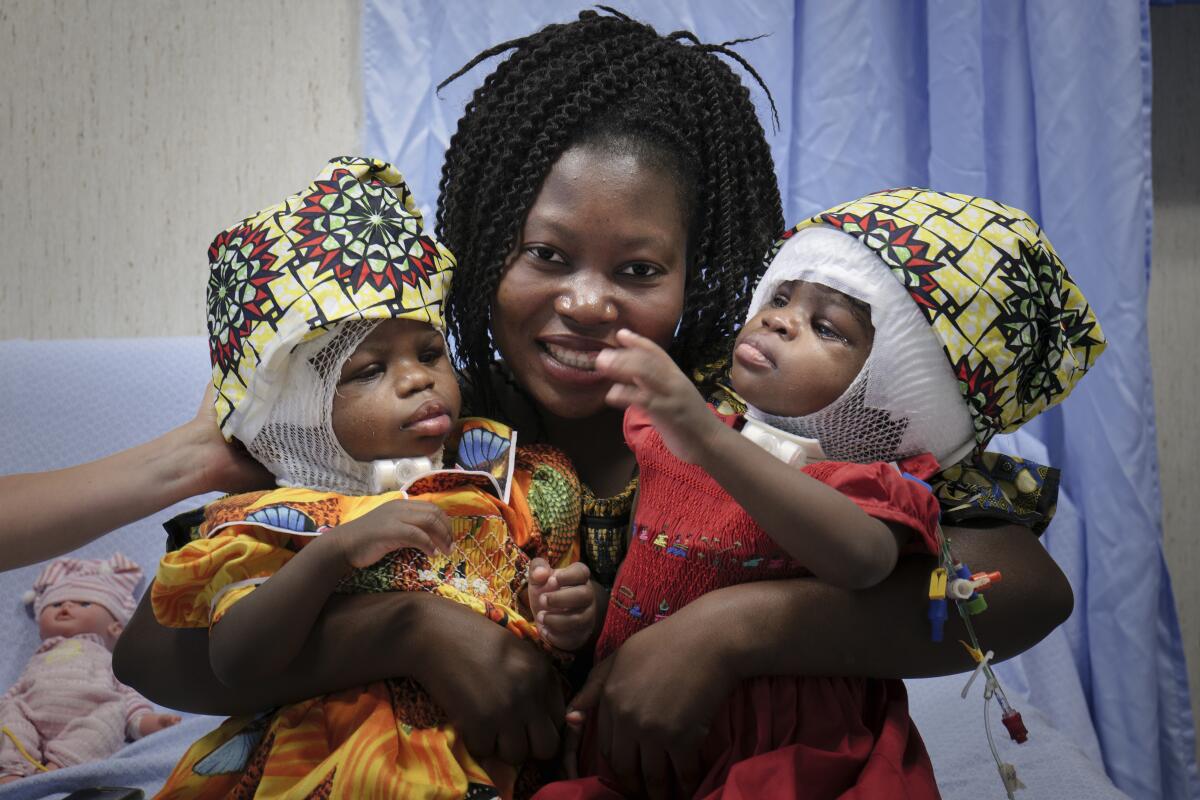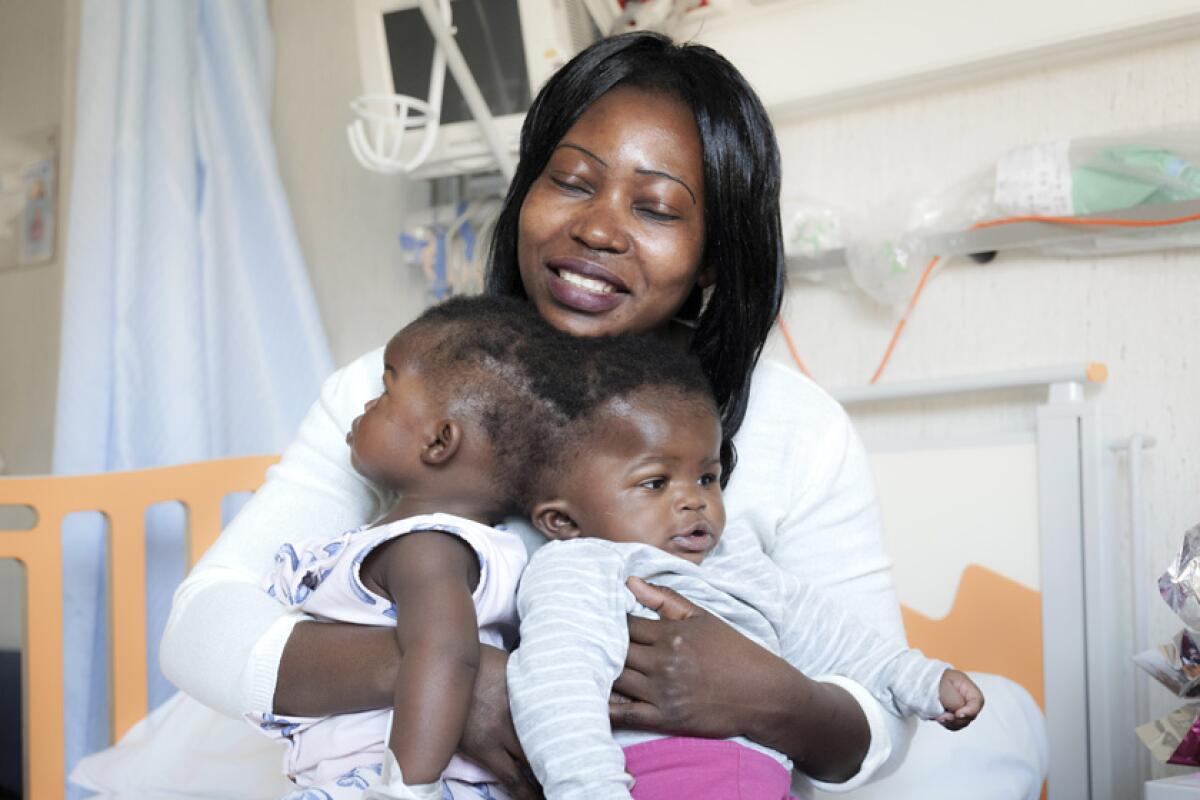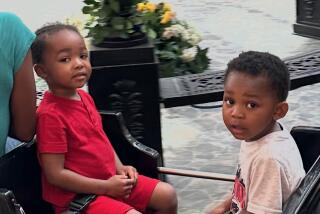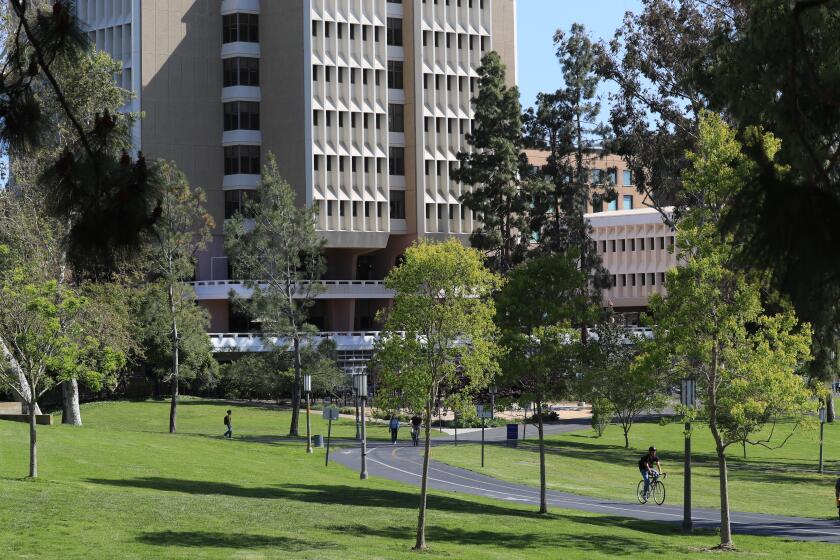Twins joined at the head are separated at Vatican pediatric hospital

- Share via
ROME — Doctors at the Vatican’s pediatric hospital said Tuesday that they have successfully separated conjoined twins whose skulls were fused back to back, in an exceedingly rare surgery for an equally rare congenital defect.
The twins, Ervina and Prefina Bangalo, were born June 29, 2018, in Mbaiki, Central African Republic, with their heads attached and sharing critical blood vessels around their brains. Such cases of conjoined twins occur once in every 2 million births or so.
The Bambino Gesu Pediatric Hospital, which is Vatican-owned but operates within the Italian public health system, brought the twins and their mother to Italy soon after their birth. The hospital said the toddlers were recovering well a month after their third and definitive separation surgery on June 5.
Video released by the hospital showed the girls waving along to music from their beds, clapping and holding markers, as well as celebrating their second birthday in their mother’s arms as hospital staff sang “Happy Birthday” to them in Italian.
The key goal of the surgery was “to obtain a separation with the girls in perfect condition. So the objective we gave ourselves was very ambitious, and we did everything to reach it,” Dr. Carlo Marras, chief of pediatric neurosurgery at Bambino Gesu, said.
Marras led the team that worked for nearly two years planning and executing the separation.

At a news conference to announce the outcome of the sisters’ surgery, Marras said the prognosis was that “these girls can have a normal life” after a phase of rehabilitation.
There have been successful separation surgeries in the past of twins joined at the head, but most have been for twins whose heads were fused vertically, at the top. Ervina and Previna’s skulls were joined back-to-back in what is known as “total posterior craniopagus.”
That made the surgery particularly challenging, as the back of the head is a far more critical place for blood supply to the brain and drainage of blood away from it, said Dr. Jesse Taylor, head of plastic surgery at the Children’s Hospital of Philadelphia, who has participated in some separation surgeries.
“It’s one of those configurations that I think a lot of centers, when they see it, say, ‘You know, we’re not sure that this can be done safely,’” Taylor said. “The venous drainage tends to be the main limiting step for separability” in twins connected at the back of the head.
A network of capillaries, a piece of shared flesh at their hips, an indefinable psychic bond — those are the points of connection between Viola and Daisy, the conjoined twins in writer-director Edoardo De Angelis’ dark and lovely parable.
He said in typical separation surgeries, doctors can “borrow” some blood vessels to give to each twin. “But when it comes to the back of the head, you don’t have a lot of wiggle room for borrowing veins,” Taylor said.
Marras said the most complicated aspect of the Bangalo twins’ separation was indeed to give each child autonomous venous drainage systems — procedures that began with two surgeries in May and June 2019. The final, 18-hour surgery last month to separate them involved a team of 30 doctors and nurses, who made use of 3-D imaging and neuro-simulators.
Before the separation surgery, members of the Vatican hospital’s staff gave the girls mirrors so they could see one another. They knew what each other sounded like, but the mirrors helped them associate facial expressions with their personalities and sounds, Marras said.
“It was an experience that wasn’t just professional but above all human: to think that you can arrive at something that we had only imagined, with all the possibilities of failure. It was a magical moment. Marvelous,” he said.
Conjoined twins share one body; can they be separated?
Marras said there was only one previously known case of a separation of twins conjoined at the back of the head, performed in the United States during the 1980s. He said the outcome in that case was poor.
He was referring to the 1987 surgery at Johns Hopkins University by a team led by Dr. Ben Carson, who is now President Trump’s housing secretary. Both twins suffered serious neurological problems; an Associated Press story from 1989, two years after the surgery, said one of the boys was in a vegetative state and the other had severe developmental delays.
In the case of the sisters from Central African Republic, Marras said the girls so far have suffered no neurological harm.
The twins’ mother, Ermine Nzotto, wiped tears from her eyes as she watched a video prepared by the hospital of the twins before and after their separation. Nzotto said she never went to school but hopes her daughters would study to become doctors.
“It’s a joy that I can see my girls run and play like other children. May they tomorrow study and learn to become doctors to save the other children of this world,” she said through an interpreter.
The mother thanked Marras, the hospital president and Pope Francis, who visited the Central African Republic capital of Bangui in 2015 and has since strongly supported Bambino Gesu’s collaboration with the pediatric hospital there.
Nzotto said she also hopes that Francis will now baptize her girls.
More to Read
Sign up for Essential California
The most important California stories and recommendations in your inbox every morning.
You may occasionally receive promotional content from the Los Angeles Times.










